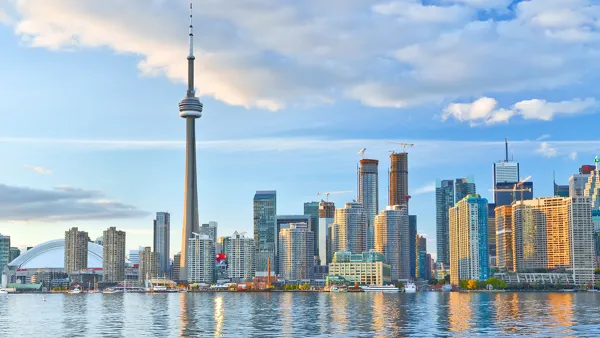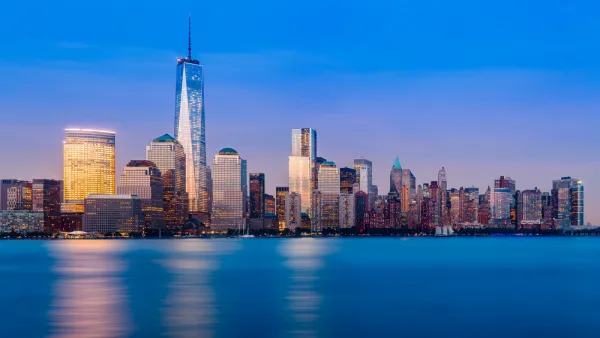One architecture critic addresses two skyscraper-related conundrums: Decorative lighting that tops the buildings are energy inefficient, and they are dangerous to migrating birds.
"New York structural engineer David Scott, the chairman of the Chicago-based Council on Tall Buildings and Urban Habitat, put that point in a broader context when I reached him by phone on Monday.
'If you just turned everything off, you would lose a lot of the [urban] vibrancy,' he said. 'If you weigh up the efficiencies you get by people working and living in a city, particularly a city that's served by public transport, you can afford to be generous with some of the lighting.' Many skyscrapers around the world, particularly in Hong Kong, are now lit with LEDs that use far less energy than conventional spotlights, he added.
Call it the 'bright lights, big city' theory of urban planning: By doing a modest amount of decorative lighting, either atop of a building or in places that accent key architectural features, you prevent the city from feeling like a ghost town. That encourages more people live in dense urban areas. And density saves energy. You spend a little energy to save a lot of energy.
A green city is not a blacked-out city."
FULL STORY: Must skyscrapers be bird-killers? Not necessarily

National Parks Layoffs Will Cause Communities to Lose Billions
Thousands of essential park workers were laid off this week, just before the busy spring break season.

Retro-silient?: America’s First “Eco-burb,” The Woodlands Turns 50
A master-planned community north of Houston offers lessons on green infrastructure and resilient design, but falls short of its founder’s lofty affordability and walkability goals.

Delivering for America Plan Will Downgrade Mail Service in at Least 49.5 Percent of Zip Codes
Republican and Democrat lawmakers criticize the plan for its disproportionate negative impact on rural communities.

Test News Post 1
This is a summary

Test News Headline 46
Test for the image on the front page.

Balancing Bombs and Butterflies: How the National Guard Protects a Rare Species
The National Guard at Fort Indiantown Gap uses GIS technology and land management strategies to balance military training with conservation efforts, ensuring the survival of the rare eastern regal fritillary butterfly.
Urban Design for Planners 1: Software Tools
This six-course series explores essential urban design concepts using open source software and equips planners with the tools they need to participate fully in the urban design process.
Planning for Universal Design
Learn the tools for implementing Universal Design in planning regulations.
EMC Planning Group, Inc.
Planetizen
Planetizen
Mpact (formerly Rail~Volution)
Great Falls Development Authority, Inc.
HUDs Office of Policy Development and Research
NYU Wagner Graduate School of Public Service




























